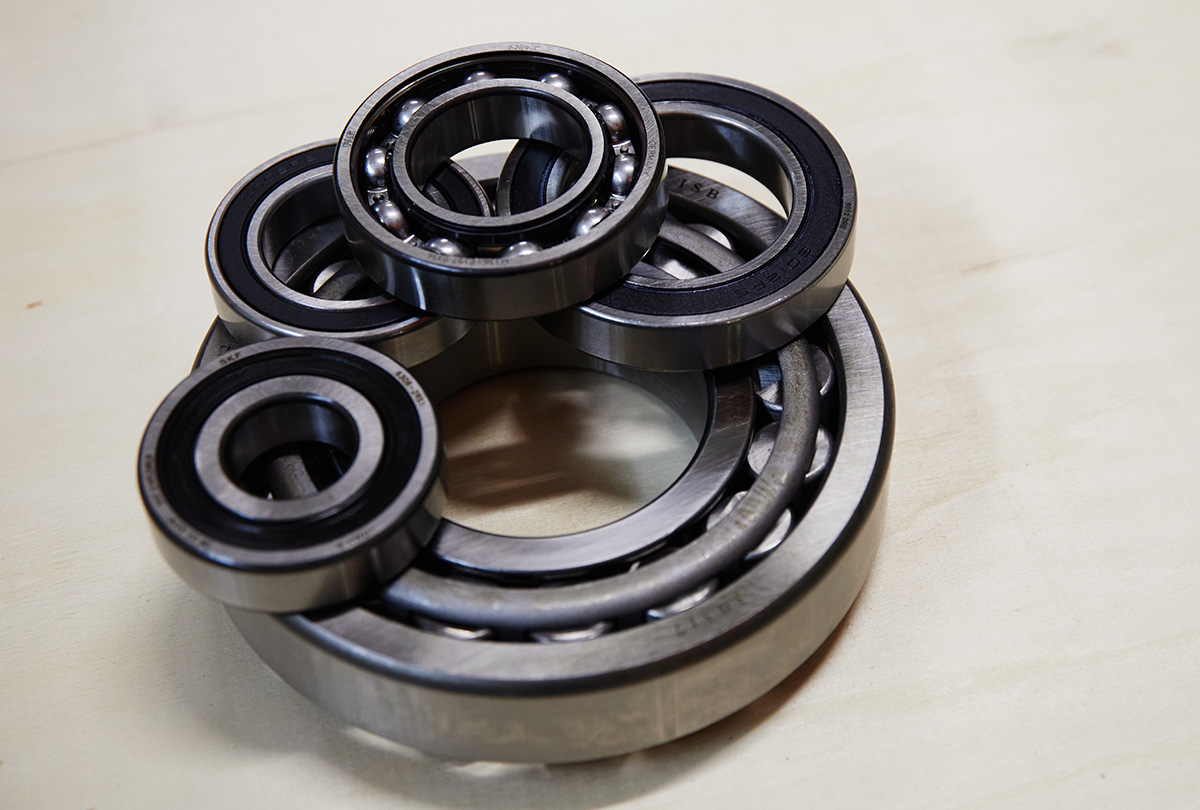Most of the time, when a mechanism works, it just works.
Only a small number of people wonder how it works.
Leonardo da Vinci came close, leaving behind a number of diagrams that testify to his interest in friction. The resistance to the movement of a body on a surface intrigued him. However, we didn't see a real ball bearing until 1794, when Philip Vaughan from Wales patented the invention.
In different countries, a succession of individuals followed, who in turn devised, developed and exploited these mechanisms for a wide variety of uses. Until, in 1899, we witnessed a major industrial breakthrough overseas: Timken was founded by Henry Timken.
Over in Europe, it was Italy and Sweden that started producing bearings: RIV in Villar Perosa (TO) and SKF in Gothenburg. In Italy in 1906 and in Sweden in 1907.

All the varieties and types of bearings that have developed over time have the same task: to reduce friction, save energy and last.
Use of bearings is universal (or nearly so).
-
Agricoltural machinery
Agricoltural machinery
There would not be much modernity in modern agriculture if the development of mechanical equipment had not relied on bearings. The components of seeding machines, tractors, threshers, ploughs and harrows are vulnerable to soil, sand and dust. Poor design and material quality are not acceptable in agricultural work.
-
Earth moving machinery
Earth moving machinery
Excavators, backhoe loaders, wheel loaders, dozers, scrapers, dumpers and all other vehicles used for shaping the ground do their job thanks to the bearings that have to withstand heavy combined radial and axial loads. The components we distribute are found in wheels, differentials, truck axle gears, transmissions and speed reducers for tracked vehicles. As well as in the front axles of loaders and the rotary motors of hydraulic excavators. To summarise, when it comes to earth-moving machinery, bearings are the first thing to go, meaning where you don't want.
-
Gear boxes
Gear boxes
Bearings designed to work in an electric motor have the same characteristics, but with an added bonus: insulation and silence. The real enemy of these models is electrical erosion. They are fitted with an insulating layer to limit damage from passing current and improve their longevity.
-
Packaging machinery
Packaging machinery
Bearings for machines used in the food industry are the main focus here. Bottling machines and packaging plants for various foodstuffs operate safely, churning out packaged products, not least because there are functional bearings designed for this purpose. Next come machines used in other contexts, other than food, such as strappers, pallet wrappers, banding, wrapping and strapping machines. They all require bearings. The better their quality, the longer their service life.
-
Steel working machinery
Steel working machinery
Machine tools and precision machines require very high performance from their bearings. Bearings for this use perform a multitude of tasks: they withstand high speeds, are precise in their guidance, stand out in their rotational capacity, produce little heat and respond well to vibration. You will find them in metalworking and forming machines, welding, milling, cutting and drilling machines. Not to mention flattening machines, sheet metal straighteners and rolling mills.
-
Marble working machines
Marble working machines
The problematic condition of bearings mounted on marble extraction and processing machines is caused by the erosive environment in which they operate. Dust, extremely heavy loads and significant vibrations all have an impact. When substitutions occur, they must be carefully considered. No breakdowns and consequent costly downtime.
-
Cranes and lifting equipment
Cranes and lifting equipment
The importance of using a reliable bearing is most clearly and concretely defined when we talk about logistics equipment. Imagine a container-lifting or other crane stuck because a poor-quality bearing has disintegrated, which immediately leads to a spannometric calculation of the chain of costs generated by downtime.
-
Gardening machinery
Gardening machinery
From the most professional to the hobbyist, all green maintenance machines operate using bearings. Mud, moisture, greenery residues and pollutants are factors that damage the durability of our components. As in other areas, saving money at the expense of quality is never a great solution.
-
Alternative energy sector
Alternative energy sector
The renewable energy sector is also not exempt from the use of bearings. In particular, wind farms need reliable components to convert every "gust" into clean energy. There are bearings in the rotor shaft where they are exposed to the force generated by the wind, which subjects them to very different loads and operating conditions. They are also in the gearboxes and generators of the blades themselves.



